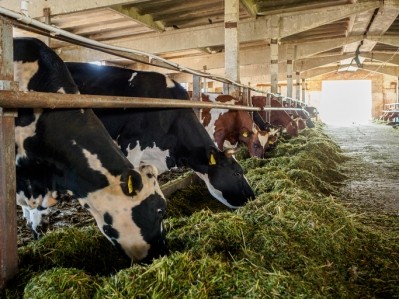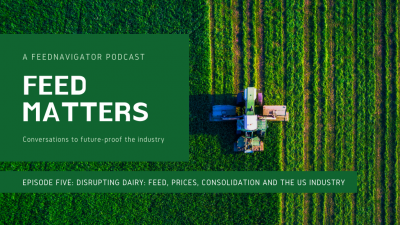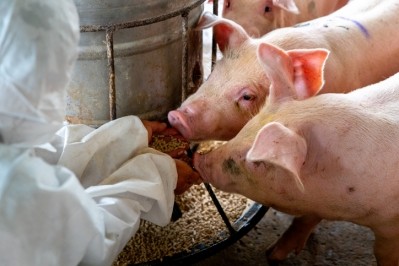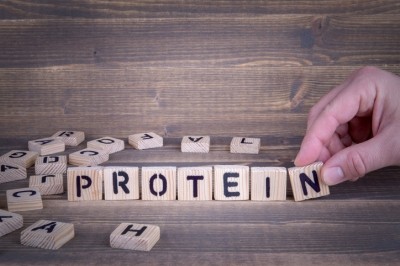Clay additive in dairy cow feed boosts nutrient, fat use
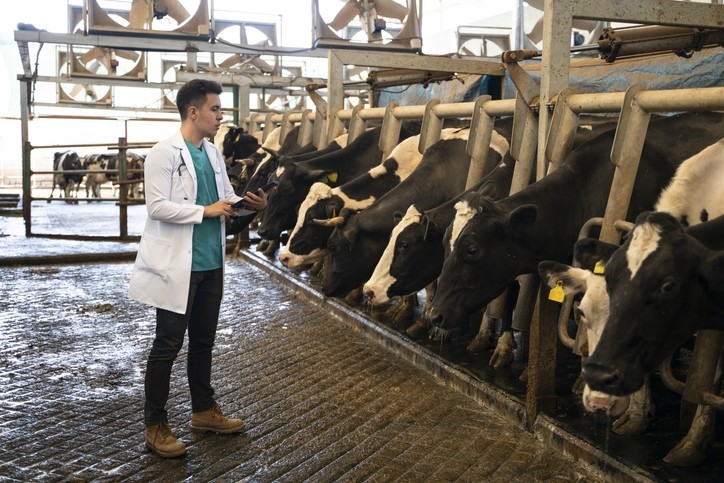
Clay-based feed additives have been widely examined as tools for combating the negative impacts of both aflatoxin tainted feedstuffs as well as subacute ruminal acidosis (SARA).
Now a US study evaluating the ruminal degradability of feedstuffs in response to various concentrations of dietary clay in lactating dairy cows finds clay supplementation alters the in-situ degradability of feedstuffs, with higher inclusion levels of clay maximizing the fatty acid degradability in certain raw materials.
The authors believe that the swelling properties of clay along with a change in rumen pH modified rumen microbial population, and thus the degradability of feedstuffs.
Details of the work were published in the journal, Animal Feed Science and Technology.
The study was partially supported by United Minerals Group (UMG), based in Ukraine, along with the USDA National Institute of Food and Agriculture; one of the co-authors was affiliated with UMG.
Phil Cardoso, associate professor in the department of animal sciences at the University of Illinois, told us his team had an expectation that adding clay to diets would help with rumen pH and alter the digestion of some feedstuffs, including potentially improving their degradability.
Adding clay to dairy cow diets has been a way to reduce the negative effects of aflatoxin contamination in feed ingredients and support a healthy rumen in cows on a high concentrate diet, the researchers said.
However, there is a lack in understanding of how clays interact with feedstuffs and their influence on ingredient degradability, they said. More information is needed to better understand what the use of clay in feed means for nutrient availability.
Another element to consider is the type of clay used in the diet as not all types of clay feed additives have the same components, said Cardoso. “The clay source – that plays a big role and I don’t think people pay too much attention to it,” he said.
The study
The aim of the study was to determine the ruminal degradability of six different feedstuffs including: alfalfa hay, grass hay, wet brewer’s grains, ground corn, corn silage, and soybean meal in response to three concentrations of dietary clay [EcoMix, UMG, Ukraine] fed to rumen-cannulated lactating dairy cows.
In the digestibility trial, three cannulated and lactating cows received the same total mixed ration before being assigned to one of three feeds for a rotating 21-day period, the researchers said. Days 1 to 17 of the feeding period were an adaptation period and digestibility results were collected on days 18 to 21.
The diets used during the degradability analysis included a mixed ration without clay, the ration with 10g/kg or 20g/kg of clay added as a top dress, they said.
Samples (8g) of dried alfalfa hay (AH), grass hay (GH), wet brewer’s grains (WBG), ground corn (GC), corn silage (CS), or soybean meal (SBM) were placed into polyester bags (three replicates per feed) and incubated for 0, 2, 4, 8, 12, 48, 72, or 96 h in three rumen-cannulated cows fed one of three treatments.
Recovered bags were analyzed for dry matter (DM), neutral detergent fiber (aNDF), acid detergent fiber (ADF), starch, and crude protein (CP) for all feedstuffs. GH, WBG, and CS were analysed in terms of total fatty acids (TFA), saturated fatty acids (SFA), monounsaturated fatty acids (MUFA), and polyunsaturated fatty acids (PUFA).
Soluble (S), digestible (D), and undigested (U) fractions, fractional rate of digestion (Kd) and effective degradability (ED) were estimated for each feedstuff, treatment, and cow combination.
The findings
The team found the addition of clay to the diet of lactating cows altered the in-situ degradability of grass hay, wet brewer’s grains, soybean meal, and corn silage.
Grass hay saturated fatty acids (SFA) digestible fraction, grass hay monounsaturated fatty acids (MUFA) soluble fraction and fractional digestion rate (Kd), and wet brewer’s grains (WBG) MUFA KD were maximized with the addition of clay in the diet.
The researchers also saw that wet brewer’s grain DM effective degradability (ED) decreased while soybean meal’s DM ED increased with the addition of clay.
“The effect of the different feedstuffs on fat, especially the monosaturated fatty acids was kind of surprising,” Cardoso said. “If we hadn’t gone into the fatty acids, we wouldn’t have figured out that we could feed higher [amounts of] fat with clay.”
“And it’s not preventing the cow from performing. Clay is another tool we can use to improve cow performance in a natural way.”
The clay allowed for the degradation of fat to be “maximized,” said Cardoso. “So, if you’re feeding those ingredients, you could expect that you’re going to get more energy out of them,” he added.
“What happens with the clay is that that fat will have more chance of being saturated or degraded,” he said. “Even for corn silage, the fat portion degradation is maximized when we use the clay – we’re probably changing the environment so bacteria that digest a little more of the fiber and also the fat are highlighted.”
There are several areas to be explored in future research on this topic, including the evaluation of any changes to the microbiome profile through dietary clay supplementation. There is also a need to assess whether there is any modification of tissue, he said.
Source: Animal Feed Science and Technology
DOI: doi.org/10.1016/j.anifeedsci.2019.114331
Title: Improvements of in situ degradability of grass hay, wet brewer’s grains, and soybean meal with addition of clay in the diet of Holstein cows
Authors: M.E. Hollis, R.T. Pate, S. Sulzberger, A. Pineda, Y. Khidoyatov, M.R. Murphy, F.C. Cardoso
